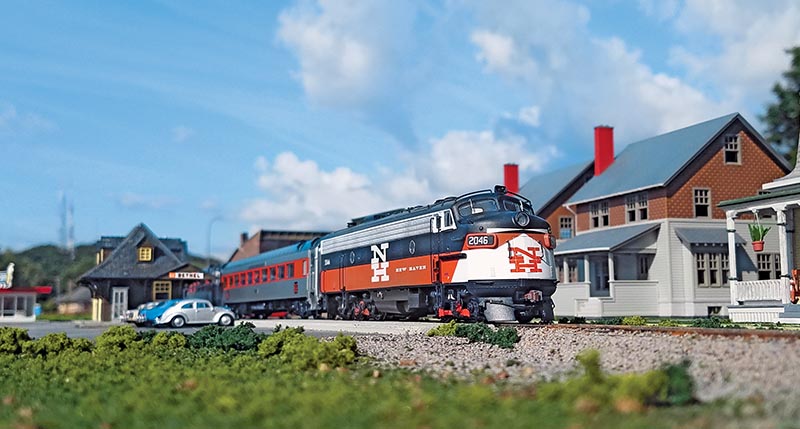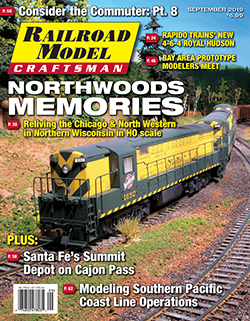 By Otto M. Vondrak/photos by the author
By Otto M. Vondrak/photos by the author
Last month we wrapped up some scenery effects at Flagstone, the end of our fictional NJ Transit branch line. In this installment, we’ll take a look at different kinds of commuter trains and how you can model them.
What should you choose? The type of equipment you roster is based on many factors, including ridership levels, population served, and density of service. Passenger trains fall into roughly two categories: self-propelled and locomotive-hauled.
Self-Propelled
Instead of calling up a traditional consist pulled by a locomotive and operated by a five-man crew, a self-propelled train is like a locomotive and coach all rolled into one (and could be operated with as few as two men, depending on work rules and union agreements). As early as the 1920s, some railroads experimented with gas-mechanical motorcars to provide service on lightly patronized lines. The carbodies were similar to heavyweight coaches of the time. Riders often complained of the smell from unburned fuel. While gas-electric cars offered slightly more reliable service, many were retired once wartime demand forced a return to conventional locomotive-hauled consists.
When traffic levels dropped back to normal levels after the conclusion of World War II, many railroads were once again looking to cut operating costs on low-density lines. Taking advantage of new developments in diesel engines, along with their own experience building lightweight stainless steel passenger cars, Budd introduced the first Rail Diesel Car (RDC) in 1949. Available in several coach, mail, and baggage configurations, railroads across the country quickly adopted these cars in an effort to upgrade service and reduce costs. Eastern railroads would run them together as multiple units for flexible commuter runs, while other roads ran them singly or in pairs to provide branchline connections and other secondary services.
The RDC proved to be a robust design, with many cars serving into the 1980s. Dozens more were rebuilt into de-motored coaches, extending their service lives into the 1990s and beyond.
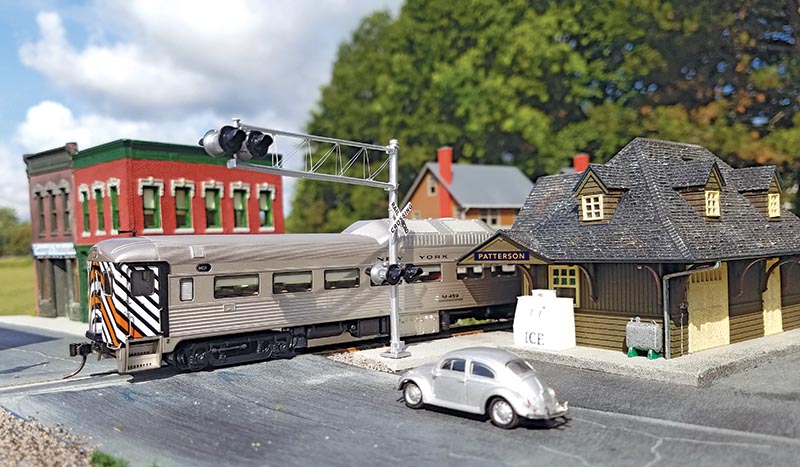
Budd tried to duplicate their success with the RDC in the late 1970s with the SPV-2000. Based on a design developed for Metroliner and Amfleet coaches, the new car found few customers outisde of New York’s Metropolitan Transportation Authority and the Connecticut Dept. of Transportation. Notoriously unreliable, they were withdrawn from service by 1990. Many were rebuilt as coaches and used on Connecticut’s Shore Line East service until just recently.
Colorado Railcar introduced a new diesel multiple-unit (DMU) car in 2003 as a possible solution for cities looking to establish new or extend existing commuter services. Unfortunately, the company only found two customers before shutting down in 2008. The only currently operating example can be found on Portland TriMet’s Westside Express Service. Of note, this line also uses Budd RDCs to augment rush-hour service!
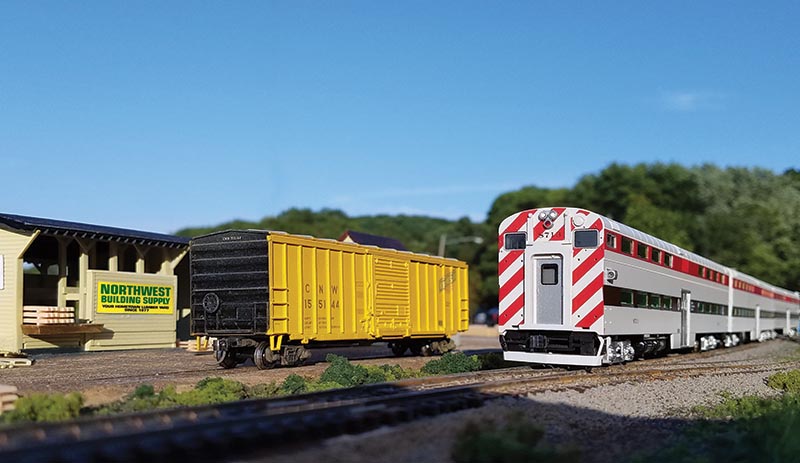
Change a few key details, and suddenly, we’re in the Midwest. The morning Metra train to Chicago passes the local lumber dealer in Wheaton, Ill. The coaches are by Kato.
The DMU concept has proven much more popular overseas, and many European manufacturers are establishing operations here in America to supply cars for new start-up services. Most recently, Swiss manufacturer Stadler Rail has opened a new factory in Salt Lake City, Utah, to manufacture DMUs for the new TEXrail service in Fort Worth, Texas; Dallas Area Rapid Transit Silver Line service; and the new Arrow serving Redlands, Calif.
There are a number of options if you want to model self-propelled trains. For the pre-war era, both Bachmann and Walthers previously produced models of gas-electrics based on Electro-Motive designs of the 1930s. Both are currently out of production, but widely available on the secondary market. Models of later Brill gas-electrics can be found in brass, if you choose to go that route. European manufacturers Piko and Märklin both make models of the modern Stadler DMU that could be easily adapted to run on American rails.
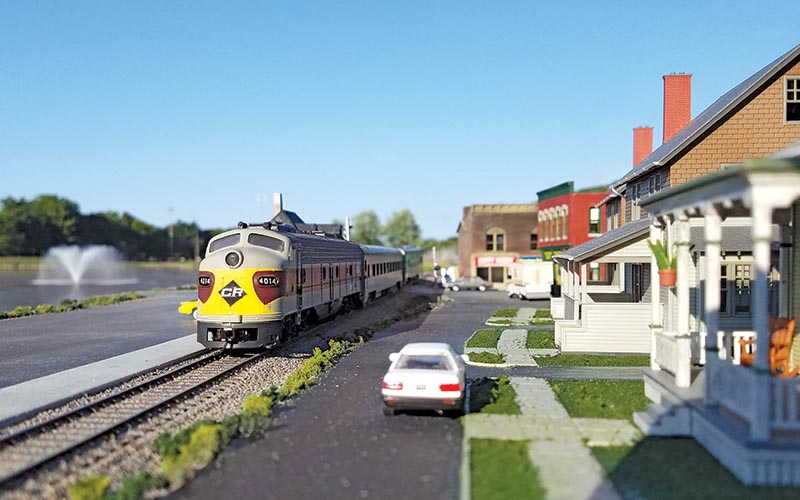
Did you know that Niles, Ohio, has a lovely fountain and park right next to the train station? Well, it does now. It’s 1977, and we’re in the final months of Conrail operation of the former Erie Lackawanna commuter train between Cleveland and Youngstown. The models are by AHM, with the lead unit reworked and repainted to represent an EL unit.
Locomotive-Hauled
A conventional commuter train consist is usually made up of coaches hauled by a locomotive. The cars could be heavyweight or streamlined, single-level or bi-level. Locomotives can be steam, diesel, or electric. Generally speaking, you could select any number of coaches to be hauled by an engine of your choice to represent a commuter train on your layout.
In the years prior to 1970, some commuter consists were augmented by mail and express cars. For many lines, postal contracts were the only thing keeping passenger service alive, so it wasn’t uncommon to see the first train in the morning and the last train at night carry a Railway Post Office car. The Post Office cancelled the majority of RPO routes nationwide in 1967, which led to the elimination of many passenger routes soon after.
Baggage and combine cars could be found on commuter trains serving several purposes. The obvious reason would be to carry luggage, but few commuter schedules offered this service. Another use would be transporting bags of pre-sorted mail to deliver to each station. It wasn’t uncommon for bundles of morning edition newspapers to be kicked off at each stop along the way, too. Prior to 1975 you might have Railway Express Agency package shipments to carry as well…


